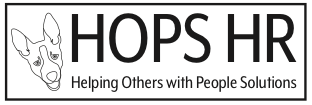Are You Ready to Reopen?
With state restrictions being lifted and businesses being allowed to reopen, are you ready to have your employees back to work and visitors, vendors, and customers coming into your building? Here is a recommendation from the CDC, “all workplaces should hold off from reopening unless they are ready to protect employees at higher risk for severe illness, including those 65 and older and people of all ages with underlying medical conditions.”
Here are some things that you should be doing to ensure a safe and healthy workplace. This is not intended to be an exhaustive list due to each business needing to self assess and determine what they need to do.
Before People Show Up
- Disinfect and clean entire workplace and develop plan for additional cleaning practices when employees and customers return
- Put up posters that promote healthy hygiene, like handwashing, mask wearing, and social distancing
- Have personal protective equipment like face masks and hand sanitizer available for employees and customers
- Place signs at entrances for customers with rules for entry
- Put out hand sanitizing stations throughout the building and at all entrances
- Think through the following
- Ice Machines – is there a reusable scoop that will be touched by multiple people
- Water fountains should be shut off unless it is a touchless bottle refill station
- Utensils, plates and bowls that are provided by your company to your employees.
- Create communication plan on how to let people know when to return to work, new policies, symptoms of COVID-19 (see link below for sign in multiple languages) and if they are having symptoms what to do. Ensure you speak to every employee. Notify vendors and customers of new guidelines and requirements for entry.
- Develop plan for where people will sit, interact, and be around each other especially if it is normal for them to be in close proximity this should include, meetings, shared work spaces and office spaces, and entrances.
- Develop work guidelines that help you hold employees accountable which could include required daily screenings, wearing face masks, following healthy hygiene standards, not coming in if sick, and notifying supervisor if the employee begins to feel sick while at work.
- Ensure you communicate the new policy to employees
- Communicate to managers how to implement and enforce the new policy
- Remember that you are responsible for the health and safety of all employees
- Develop temporary policy on sick leave in preparation if an employee needs to take sick leave if you do not already have a sick leave policy.
- Ensure you are fully compliant with the Families First Coronavirus Response Act (FFCRA) see our FFCRA Compliance Packet
- Have you considered how to handle if an employee refuses to return to work – see below for more information
- Develop a response plan in case an employee tests positive for COVID-19
- This should include communication to employees and local health authorities
- Understand how to handle accommodation requests for high risk people
First Day of Employees on Site
- Follow all screening guidelines for every employee, cannot discriminate on who you screen and who you don’t screen.
- Provide a copy of the new policy to all employees and answer any questions they may have.
- Follow-up with employees that did not showy cleaned
- Ensure facility is being thoroughly cleaned and high touch areas are being wiped down frequently
- If you are collecting screening forms or taking temperatures you need to ensure confidentiality of the information and you cannot store the documents in the employee’s personnel file. This information has to be kept separate from other personnel documents.
Employees Who Do Not Show Up or Refuse to Return to Work
- Scenario 1 – Employee says they don’t want to return because they will make more on unemployment.
- Let the employee know that by having work available to them they are required to take it. It can be considered fraud for staying on unemployment when work is available.
- If the employee says they won’t return to work due to one of the exemptions documented by the Texas Workforce Commission, then they can stay home.Ensure you document the reason for denying the available work when the employee believes they will be able to return.
- Scenario 2 – Employee does not answer phone, text, email about coming back to work
- Document all the instances of trying to reach the employee including description of message, time, and method of contact. Keep screen shots of text messages. Try multiple times over multiple days. After multiple attempts, let the employee know by not returning the phone call and not showing up for work will result in them voluntarily resigning from their position. You can also contact their emergency contact to ensure the person is safe. Follow your policy on no call no show.
- Scenario 3 – Employee states they are a high-risk person and does not want to return to work or wants to work from home.
- Conduct an interactive process discussion to determine accommodation. Document the discussion and the outcome.
If you need help developing new policies, communications, or an entire reopening plan, contact us today to start your consultation.
CDC Flowchart to Determine Reopening
Texas Department of Health of Human Services Minimum Health Protocols

